It's Admissions Season!
Register for a tour or inquire to learn more about WSP’s transformative preschool-12th education.
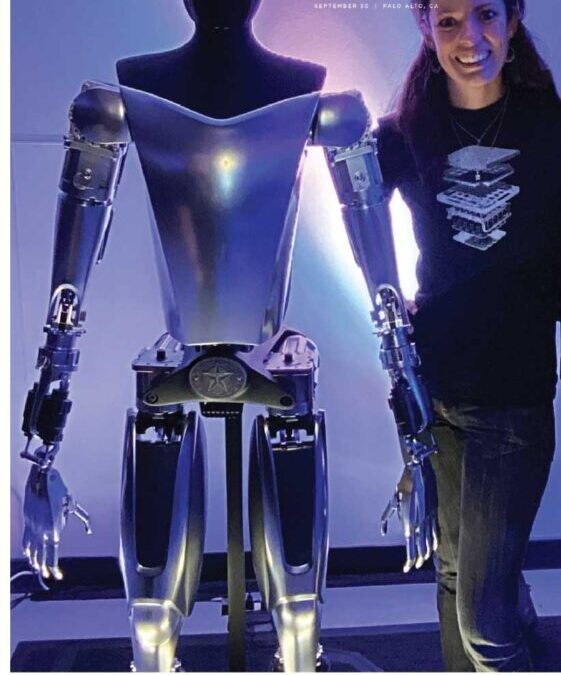
Reprinted with permission.
Born in Germany, Woodman grew up in the Bay Area, and attended Waldorf School of the Peninsula (WSP) in Mountain View, California, from kindergarten through Grade 8. For high school, she spent one year
at a German international school and the last three at San Francisco Waldorf High School, commuting to the city every day for three-plus hours because she loved Waldorf so much. Woodman attended Drexel University in Philadelphia for a BS in Design and Merchandising and then worked at a software start up, working up to project manager in two years.
She then joined Tesla as a project manager in low voltage harness engineering. Nine years later, Woodman has worked her way through various departments (vehicle engineering, sales operations, new markets, engineering finance) to find her way back to engineering, this time on the Dojo project leading a team of PMs in building a supercomputer to accelerate autopilot AI training. She joined the board of WSP several years ago, which she says, “has given her a huge appreciation for the
infinite work from faculty and staff to make the Waldorf magic happen!”
How did the Waldorf teaching approach support the development of your analytical mind? Instead of being given text books that held facts to learn by rote, we dove into topics from source material and first
principles. Physics, chemistry, and biology main lessons always started with an experiment, observing and measuring the results, posing hypotheses and testing those again until we could confirm or deny our assumptions. History and humanities started with a question, or a story, or belief system that was researched, discussed, reflected on in the context of the time and culture. Learning in this investigative way keeps you curious and perceptive, open to new ideas and willing to challenge given assumptions.
“Engineering is ultimately a
creative, problem-solving,
and collaborative pursuit that
very much reminds me of my
time at [Waldorf].”
How did the study of arts, movement and music impact your journey? I can’t say that I was very musically gifted (my parents may remember a particularly embarrassing flute solo presentation freshman year in high school), but I very much enjoyed painting, knitting, sculpture, weaving, basketry, stained glass and many other visual/practical arts. On the one hand, just the joy and freedom of creating something from a blank piece of paper or a set of raw materials, bringing your ideas and imagination to life, getting your hands dirty and having direct and immediate impact on the materials. But also practically working through a design concept, hitting snags or mistakes along the way, adjusting or adapting your methods, or simply learning to accept a different outcome than the one you originally imagined; these are all lessons that artistic pursuits slowly teach us one painting or knitted sock at a time. I have adjusted my personal path many times, and I consider flexibility and adaptability one of my greatest assets. I have little doubt that artistic endeavors are a key to developing those skills.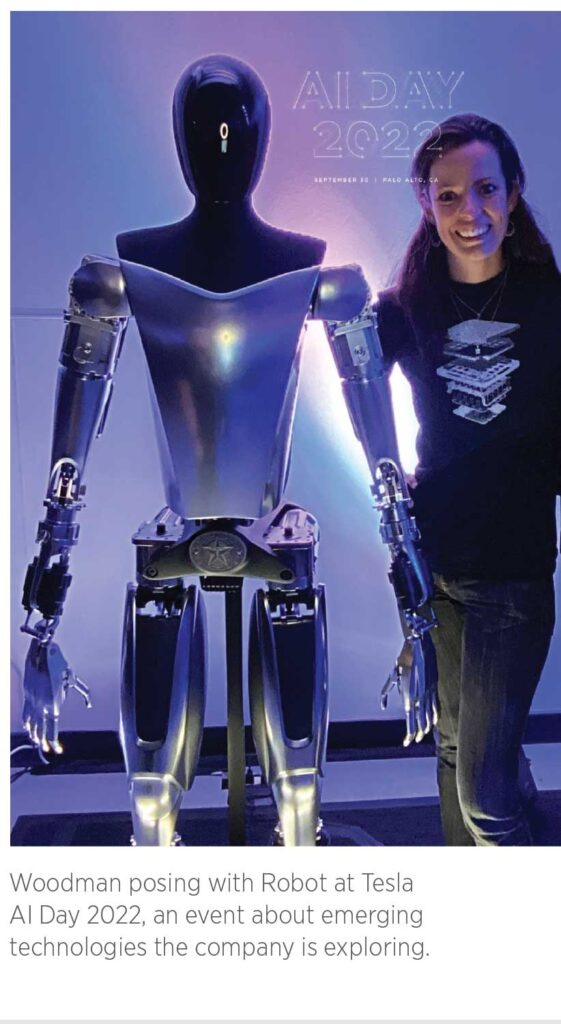
How did the well-rounded, liberal arts focus of a Waldorf school shape your decision to work in the field of science/tech? Honestly, I still don’t know what I “want to be when I grow up!” But along the way, I did learn that I enjoy “real work”—designing things, building things, fixing things—and so my gradual transition from design arts, through various roles, back to engineering was less of a single decision and more of a journey through trial and error to find a role that keeps me engaged, challenged, and constantly learning.
Engineering is ultimately a creative, problem-solving, and collaborative pursuit that very much reminds me of my time at school. Part of my struggle as a Waldorf graduate was that I felt I could go in so many directions, it was hard for me to choose a major for college, and tough to choose where to look for my first job. I have always been a tad envious of people who know exactly what they want to do, and can map a path forward based on those goals. I have had to embrace my ‘jack of all trades’ tendencies, and make choices and course corrections as they arise. The exciting thing is I still feel like I could go in many different directions with my life and career, and am looking forward to the next adventure when it finds me!
How would you describe rigor in a Waldorf school? Subtle. I never felt pressured to do more or be better, but the environment brings out the best in you. Teachers who are passionate about their subjects, fellow students whose skills and abilities inspire your own growth and development, and a climate that encourages exploration while supporting failure. I don’t think I missed a single day of high school, and walking through the hallways of the WSP high school now makes me want to go back!
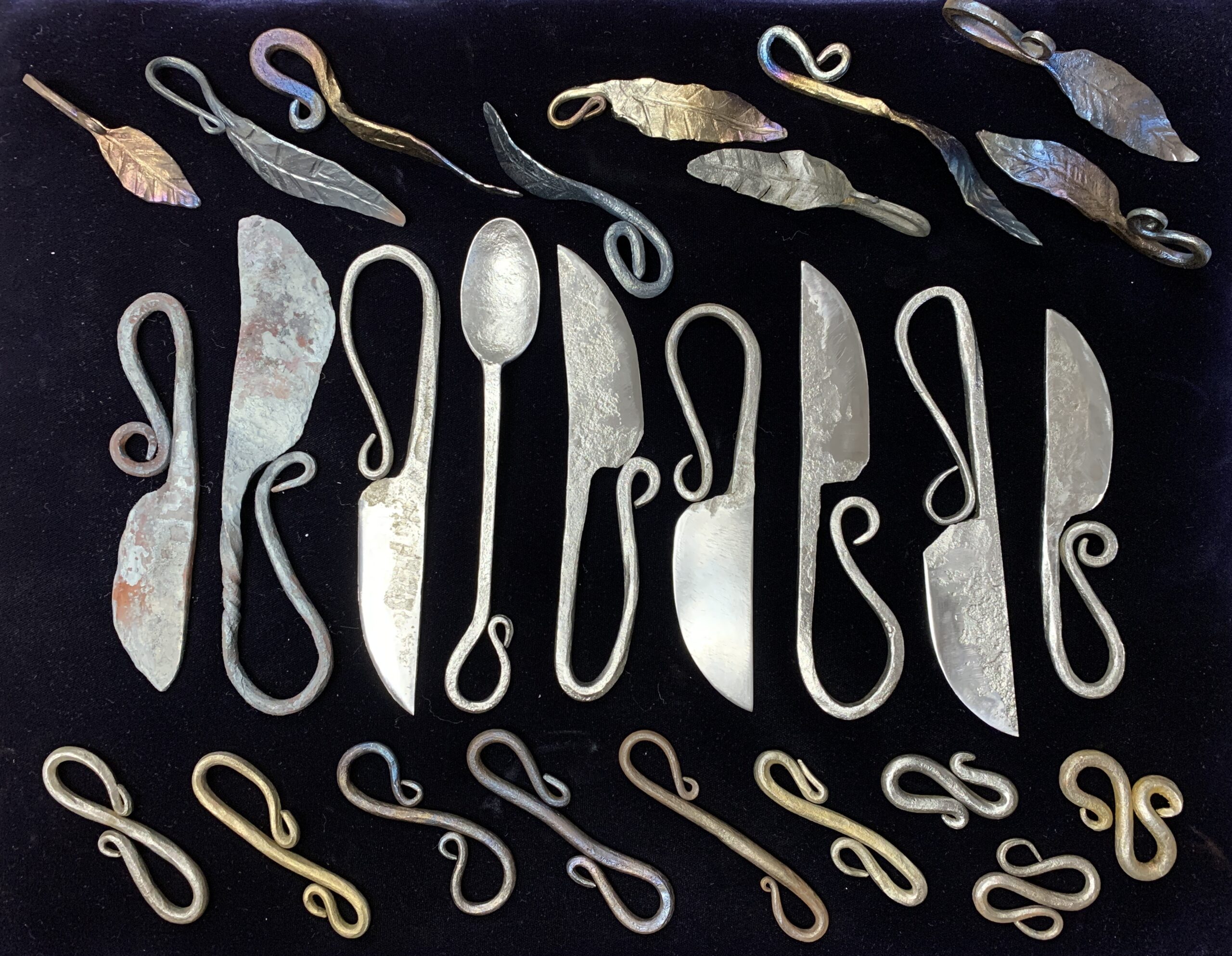
“The Village Blacksmith”
by Henry Wadsworth Longfellow (artwork by grade 10 students)
…Toiling,—rejoicing,—sorrowing,
Onward through life he goes;
Each morning sees some task begin,
Each evening sees it close;
Something attempted, something done,
Has earned a night’s repose.
Thanks, thanks to thee, my worthy friend,
For the lesson thou hast taught!
Thus at the flaming forge of life
Our fortunes must be wrought;
Thus on its sounding anvil shaped
Each burning deed and thought.
What is the future of education if artificial intelligence can write essays, give quick answers to whatever questions we have, and translate languages instantaneously? Is schooling, the way we know it, on its way out? Are we holding onto a system of the past?
Before I answer these questions, we need to address what the real purpose of K-12 schooling is. Because if it is possible to write an essay, know who was instrumental in starting the American Revolution, and chat with someone while traveling in Spain, then maybe ChatGPT and others like it will replace education systems. ChatGPT can write an essay, it can give us historical information and it can (and will become even more adept) at speaking in different languages. We don’t really have a need for schooling the way it is now if that is our goal.
But, what if the real purpose of schooling is something different? If the goal of writing a six page essay in 12th grade has a lot more to do with showcasing individual voice, unique perspective, and relational thinking, then the actual finished product is not the aim. Rather, it is the process that the student engages with along the way. It is the comments they make during class discussions, the comparisons they notice between Octavia Butler and Cormac McCarthy’s dystopian novels, and the observations they turn into theses. The culminating essay is merely a means for the internal capacities to be made visible. Prompting ChatGPT to write it doesn’t build new neural connections or advance synthesizing capacities in the way that writing an essay does. The thinking grows throughout the course, and what becomes important to each student is what their own free mind comes to.
If education is more about intellectual development and social development than knowledge acquisition, then we have an entirely different task in front of us. ChatGPT no longer becomes pivotal to the question. Instead, what becomes important is what ensures that someone succeeds in an unpredictable world. It is less about memorization of a list of facts, and more about the ability to find out what the most important next step in the problem is. It is less adherence to a certain structure and more the flexibility to discover an evolved or new structure. It is not only doing things by yourself in a room, but also finding a way to work with a group of 18 other people that have as much individuality as you. These are capacities we build when human development is prioritized.
If anything, the development and advancement of large language models makes Waldorf more relevant than ever. You may have heard it said that Waldorf is about developing humans to be their highest selves and this is true. That means their highest potential in their brain, their body, and their heart. Every part of the Waldorf education (in its striving form) seeks to give space for this to happen for each individual student.
It is radical that Rudolf Steiner never wanted teachers to teach his philosophy (Anthroposophy) to students. He didn’t think that any way of thinking about the world should be taught. There is a deeper wisdom to this, Steiner didn’t ever want anyone to be told how to think about the world. That discovery is for each and every individual to come to on their own. Artificial Intelligence is an incredible tool for humanity’s progress. But it does not change the need for them to reach their highest neural potential first. We still need to develop our brains and our bodies in a way that helps us be free actors in the world. With deep fakes, an overwhelming number of opinions in news reporting, and biased data statistics, we need the ability to make our own decisions more freely than ever. We need to freely decide who we want to be and how we want to exist in the world.
Waldorf Schools focus on human centered education. That can sometimes be misunderstood to mean that technology is not important. But in Waldorf education, technology is not the enemy but is a tool that should enhance, not inhibit, the purpose of education: the development of free thinking. Brilliant human beings created AI. I am excited to see the amazing things our students will do with AI for medical care, for legal proceedings, for solving climate change and of course, for guiding the ethical implementation of AI.
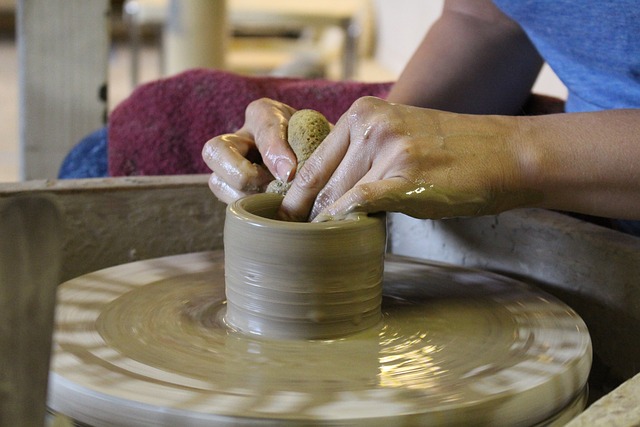
AWAY
straight and tall / swift and true
I shoot my arrow
into the center
of all
One week every year the high school suspends its classes for Experiential Interdisciplinary (EI) Week. It reconfigures itself during this week into several groups composed of students from all grade levels and teachers from different disciplines. During this special Experiential Interdisciplinary week of doing, each group undertakes unique activities based on their particular group’s theme. All the groups’ themes carry the spirit of our overall theme established and introduced by the seniors at our retreat beginning each year. This year’s high school theme is “Risk! Learn, Grow, Change.”
This year’s EI Week will help start the second half of our school year after the winter break. THe five EI Week groups have already started coming together and planning. Each group will embrace this year’s ideals in their own unique way throughout EI Week.
The Centering group will be…well, centering! We will be undertaking a few of humanity’s paradoxically understated, yet inordinately daunting activities: throwing clay on potter’s wheels, aiming without aiming in natural (instinctive) archery, and balance beam and line work. With our hands and bodies we’ll be striving to create form. Form that reaches deeply into us as we reach out to touch, squeeze, shape, pull, push, and shoot our way toward stillness and uprightness.
Perhaps renown potter, poet, and educator, M.C. Richards said it best in a colloquium on “The Human Spirit.”
The image of centering is inherent in the relationship between the potter and the clay. You take a ball of clay, put it on the potter’s wheel, and bring it into a condition of equilibrium. The quality of equilibrium has to exist throughout the mass of clay; it can’t just be an even silhouette on the outside giving an appearance of symmetry. It has to be distributed right through the body of the clay so that there’s no difference between the inside and the outside. When you open the clay, widen the bottom, and bring up the side of the cylinder or the bowl, you’re touching the inside and the outside at the same time with that wall and there is the same consistency, the same even grain, the same plasticity, the same moisture inside and out. What you discover is that as the pot rotates on the wheel, you can touch it at just one point, at any point, and the whole thing changes form. You touch it a little bit one way and the rim goes out, all the way around. You barely touch it in one spot and you give shape to the whole thing. The whole is felt in every part. Wherever you touch it, the whole thing passes through your fingers. Wherever you touch it, you’re giving shape. If we think about that in relation to our lives, in relation to the human spirit, the planet, and the universe, we realize that we effect change wherever we touch life, physically or by thinking or by something that we feel, something that we do, something that we don’t do. Wherever we touch life we form it. It’s an old teaching that man is a microcosm of the universe. If you really feel and internalize that knowledge, it is quite a thing to be a human being, to touch with the hands but also with a thought, a feeling, or a dream.
—MC Richards.
The Centering group is on the lookout for archery equipment and pottery wheels. Do you have, or know anyone who has, any archery equipment or a pottery wheel(s) we could borrow for the week? y received, please send me an email.
Richards, MC. “ESSAYS, MEMOIRS, & TRUE STORIES Centering.”1983 Oct., The Sun. thesunmagazine.org/issues/95/centering. Accessed 21 November 2023.
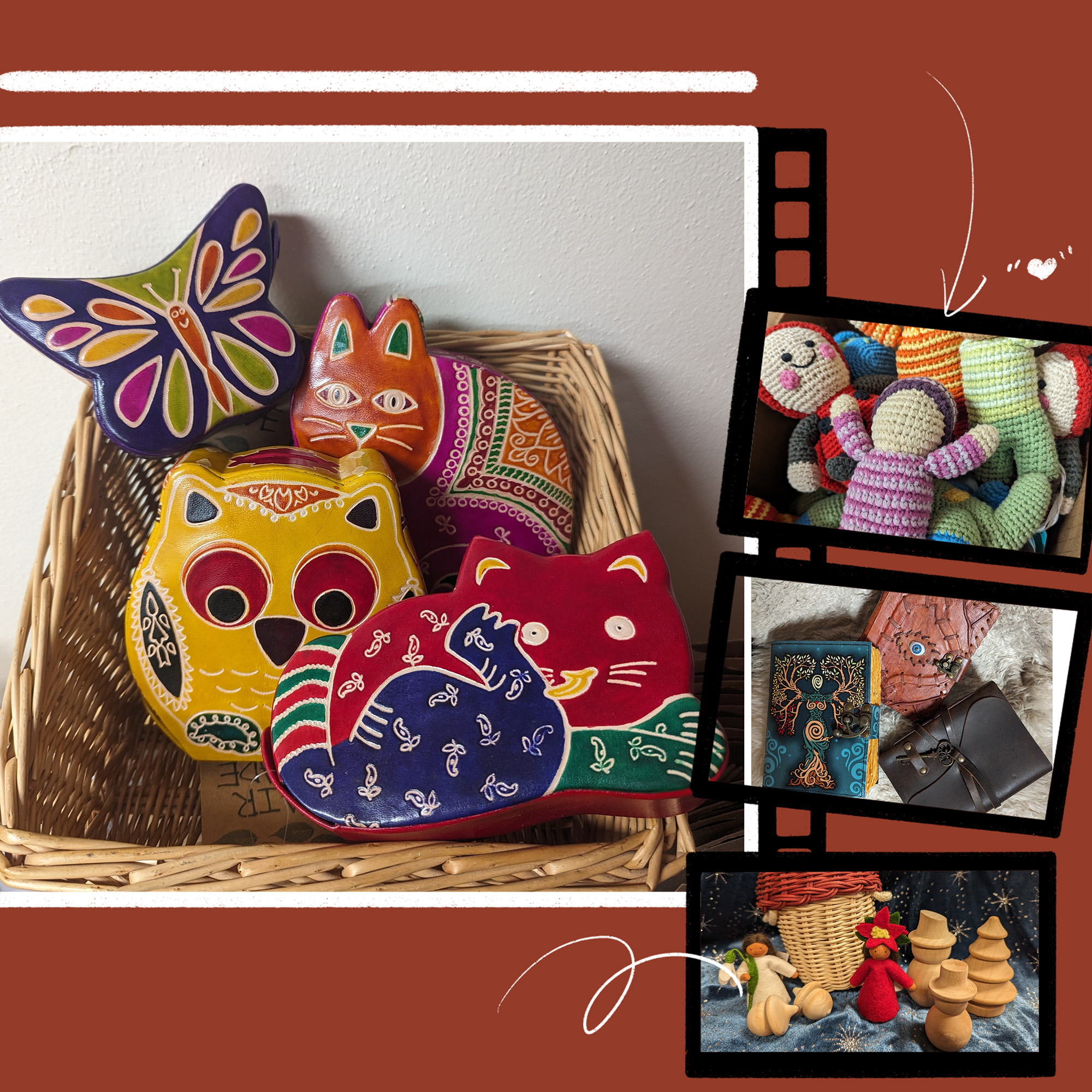
by Jaime Khoo | Store Manager
As we eagerly anticipate the enchanting arrival of the holiday season, it brings us immense joy to announce the return of a time-honored tradition: the transformation of our school store into the Winter Faire Boutique!
Just like the wonderful years that preceded, this festive haven will be a cornucopia of delights, offering the perfect destination for your holiday shopping. Step into the Winter Faire Boutique and immerse yourself in the magic of the season. Explore a treasure trove of delights, featuring both the beloved classics and exciting new additions. Whether you’re on a quest for the ideal gift for a loved one or treating yourself to a seasonal indulgence, our boutique proudly showcases a diverse collection. From the pages of captivating books to the allure of stationery, the charm of knitting/crafting products to the whimsy of costumes, as well as an array of festive items, the Winter Faire Boutique promises an extraordinary shopping experience. Here, every corner is beckoning with possibilities, and you’re sure to discover something truly special.
We extend a heartfelt invitation to your friends and families, inviting them to join us for a holiday shopping spree that transcends the ordinary. Let the Winter Faire Boutique be the backdrop to a joyous celebration of the season, filled with warmth, laughter, and the delight of finding the perfect holiday treasures.
In recognizing the importance of secret Santa missions, we’ve extended our operation hours for a special shopping experience. The Winter Faire Boutique will open its doors the night before the Winter Faire, allowing adults only to shop in peace and secrecy.
Operation Hours:
To ensure the success of this festive event, we invite you to become a part of it by signing up as a store volunteer during the Winter Faire. WSP families, please refer to our Konstella sign-ups for more details. Your contribution will help create an enchanting atmosphere and a seamless shopping experience for all.
But the magic doesn’t stop at the checkout counter! During this holiday season, seize the spectacular opportunity to embrace the spirit of giving and joy. By supporting the Winter Faire Boutique, you’re not only bringing happiness to your loved ones but also invest in the educational experiences of our students. Every purchase directly contributes to enhancing our school programs, ensuring that each child receives the best education possible.
Join us in creating magical moments and spreading joy this holiday season.